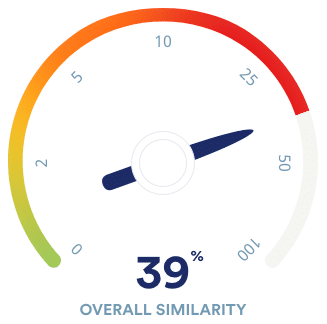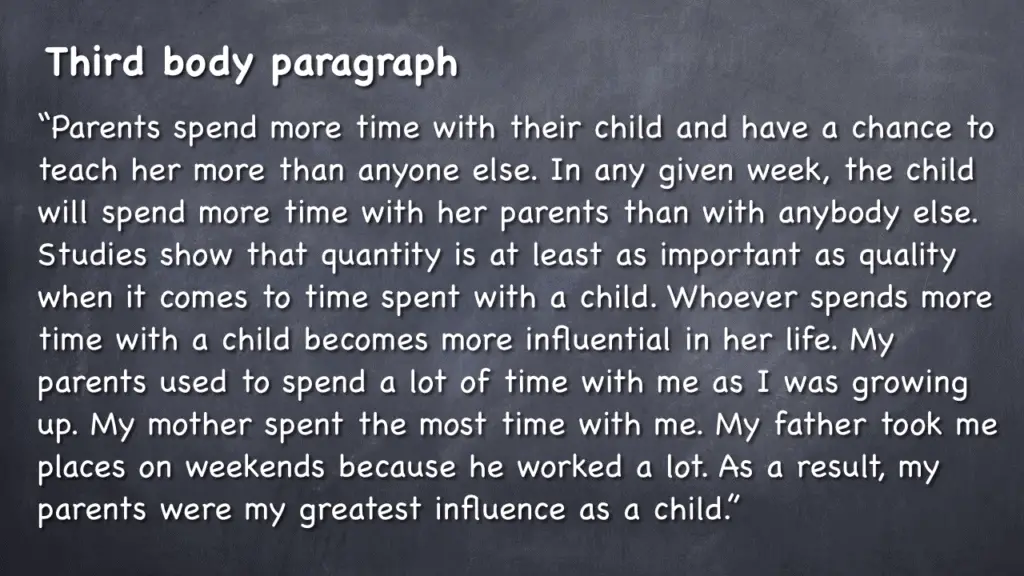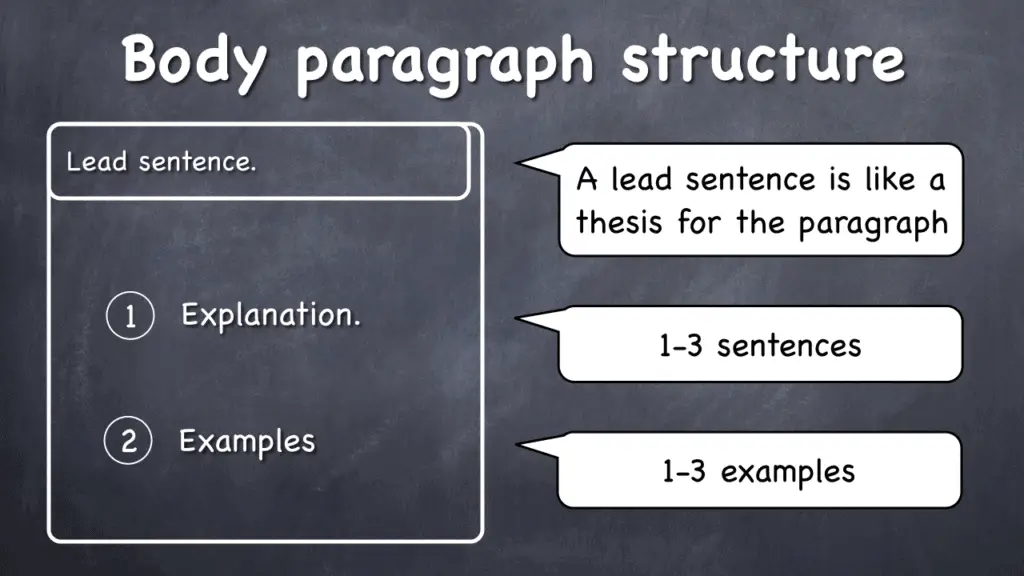
A good introduction paragraph is an essential part of any academic essay. It sets up your argument and tells the reader what to expect.
This introduction to a short expository essay leads into the topic (the invention of the printing press) and states the main point the essay will explain (the effect of this invention on European society).
- An opening hook to catch the reader’s attention.
- Relevant background information that the reader needs to know.
- A thesis statement that presents your main point or argument.
The structure of an essay is divided into an introduction that presents your topic and thesis statement, a body containing your in-depth analysis and arguments, and a conclusion wrapping up your ideas.
Step 4: Map your essay’s structure
For this reason, it’s often a good idea to wait until later in the writing process before you write the introduction paragraph—it can even be the very last thing you write.
This introduction example is taken from our interactive essay example on the history of Braille.
Example: Signposting This essay begins by discussing the situation of blind people in nineteenth-century Europe. It then describes the invention of Braille and the gradual process of its acceptance within blind education. Subsequently, it explores the wide-ranging effects of this invention on blind people’s social and cultural lives.
:max_bytes(150000):strip_icc()/Deb-Nov2015-5895870e3df78caebc88766f.jpg)
Knowing how to write an essay is a skill that you can use throughout your life. The ability to organize ideas that you use in constructing an essay will help you write business letters, company memos, and marketing materials for your clubs and organizations.
Your introduction is one short paragraph, just a sentence or two, that states your thesis (your main idea) and introduces your reader to your topic. After your title, this is your next best chance to hook your reader. Here are some examples:
Choose the top three ideas and write each one at the top of a clean page. Now go through your notes again and pull out supporting ideas for each key point. You don't need a lot, just two or three for each one.
- By observing the balance of nature in her gardens, listening to lectures, and reading everything she can get her hands on about insects and native plants, Lucinda has grown passionate about natural balance. "It's easy to get passionate if you just take time to look," she says.
Mastering these steps will make your words more compelling
:max_bytes(150000):strip_icc()/Writing-Vincent-Hazat-PhotoAlto-Agency-RF-Collections-Getty-Images-pha202000005-589588bc5f9b5874eec64230.jpg)
Before you can start writing, you must have an idea to write about. If you haven't been assigned a topic, it's easier than you might think to come up with one of your own.
- Purpose and Thesis
- Title
- Introduction
- Body of Information
- Conclusion
Echo / Cultura / Getty Images

We added a short phrase just to make the lead sentence a little longer and more detailed. Now it doesn’t read like plain repetition.
Yes, this is repetitious, but that is the nature of conclusions. Don’t worry.
- Your teacher or professor gave you a prompt, and you have to follow it
- You are allowed to make up your own essay topic
- You must pass a writing test and are practicing
Once you’ve written the body paragraphs, you’re ready for the next step.
Example

Again, this is overly simple, and I don’t expect you to write such short sentences one after another this way.
This sentence must be more general. We are zooming out a little. Let’s do it:
Take them and write them out as complete sentences in one paragraph. Let’s do it very simplistically, using our apples example:
For example, this is how we can write our conclusion about apples:

The structure of an essay is divided into an introduction that presents your topic and thesis statement, a body containing your in-depth analysis and arguments, and a conclusion wrapping up your ideas.
- Catch your reader’s attention.
- Give background on your topic.
- Present your thesis—the central point of your essay.
The spread of the internet has had a world-changing effect, not least on the world of education. The use of the internet in academic contexts is on the rise, and its role in learning is hotly debated. For many teachers who did not grow up with this technology, its effects seem alarming and potentially harmful. This concern, while understandable, is misguided. The negatives of internet use are outweighed by its critical benefits for students and educators—as a uniquely comprehensive and accessible information source
As you research and write, your argument might change focus or direction as you learn more.
More examples of essay introductions
You have a strong introduction - now make sure the rest of your essay is just as good.
To write a good hook, avoid overly broad statements or long, dense sentences. Try to start with something clear, concise and catchy that will spark your reader’s curiosity.
This introduction to an argumentative essay sets up the debate about the internet and education, and then clearly states the position the essay will argue for.
- It gives your writing direction and focus.
- It gives the reader a concise summary of your main point.

Pay attention to the headings, margins, indents, and overall typing format. Ask about the font size, organizing the reference list, and running titles on every page. Find out what you need to mention after in-text citations, and write your essay accurately according to general academic rules.
Studying demands a lot of practice and patience. Students get many tasks on writing an essay, processing workbooks, and exam preparation at any faculty and course. To manage the writing process painlessly, you can follow our step-by-step guide and make sense of these recommendations. Visit here for more info
Present your personal viewpoint towards the issue. Reveal why the reader should be encouraged with your approach to work and define its relevance for the audience.
When your brainstorming process is finished with a great idea of what to write about, you can provide research on your subject. Look wider than Wikipedia or other popular sources because readers could have already been acquainted with them. Collect facts from YouTube bloggers, articles from news platforms, or blog posts on websites or social media. Today people share their experience freely concerning their occupation and experience in various fields.
Step #7: Edit the first draft.
This is your essay’s start, where you should portray the overall story through a metaphorical outlook. It can be anything to attract readers, even if you think your essay topic is the most boring one.
Don’t underestimate the benefits of peer response. Ask your writing buddy to track your writing issues and get honest feedback on your text. Editing will help you improve overall content in many ways and impress your teacher with excellent organization skills.
An introductory paragraph usually has a hook, thesis statement, and methodology description.
There are various formatting styles, and teachers can assign any of them. Usually, one educational institute sticks to a particular citation style, and it might be APA, MLA, Turabian, Chicago, Harvard, or another. Some schools have their own formatting guidelines, but it is better to clarify with your teacher.
